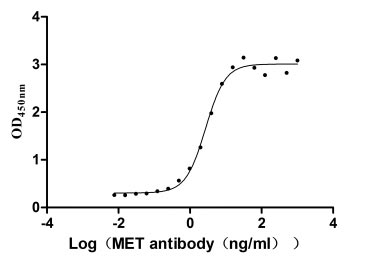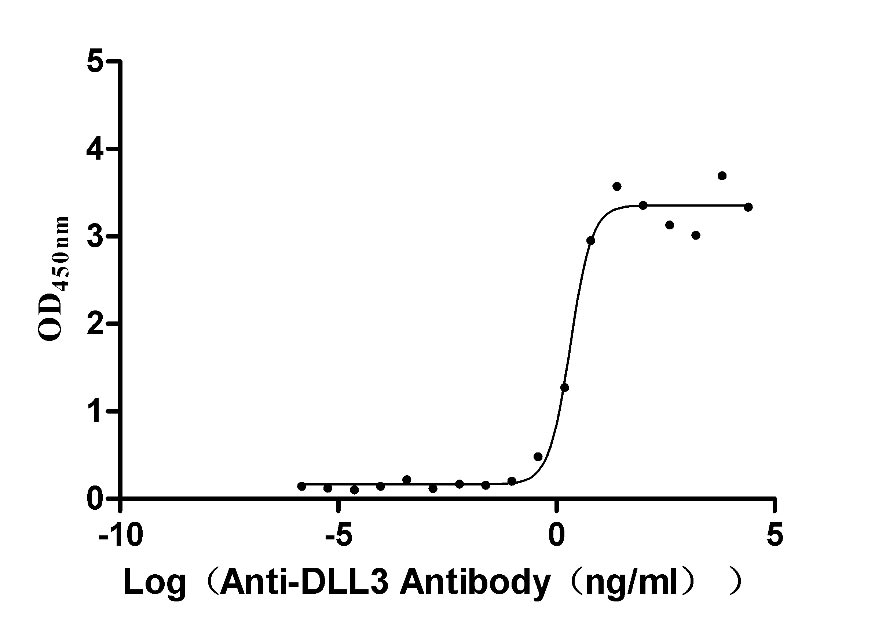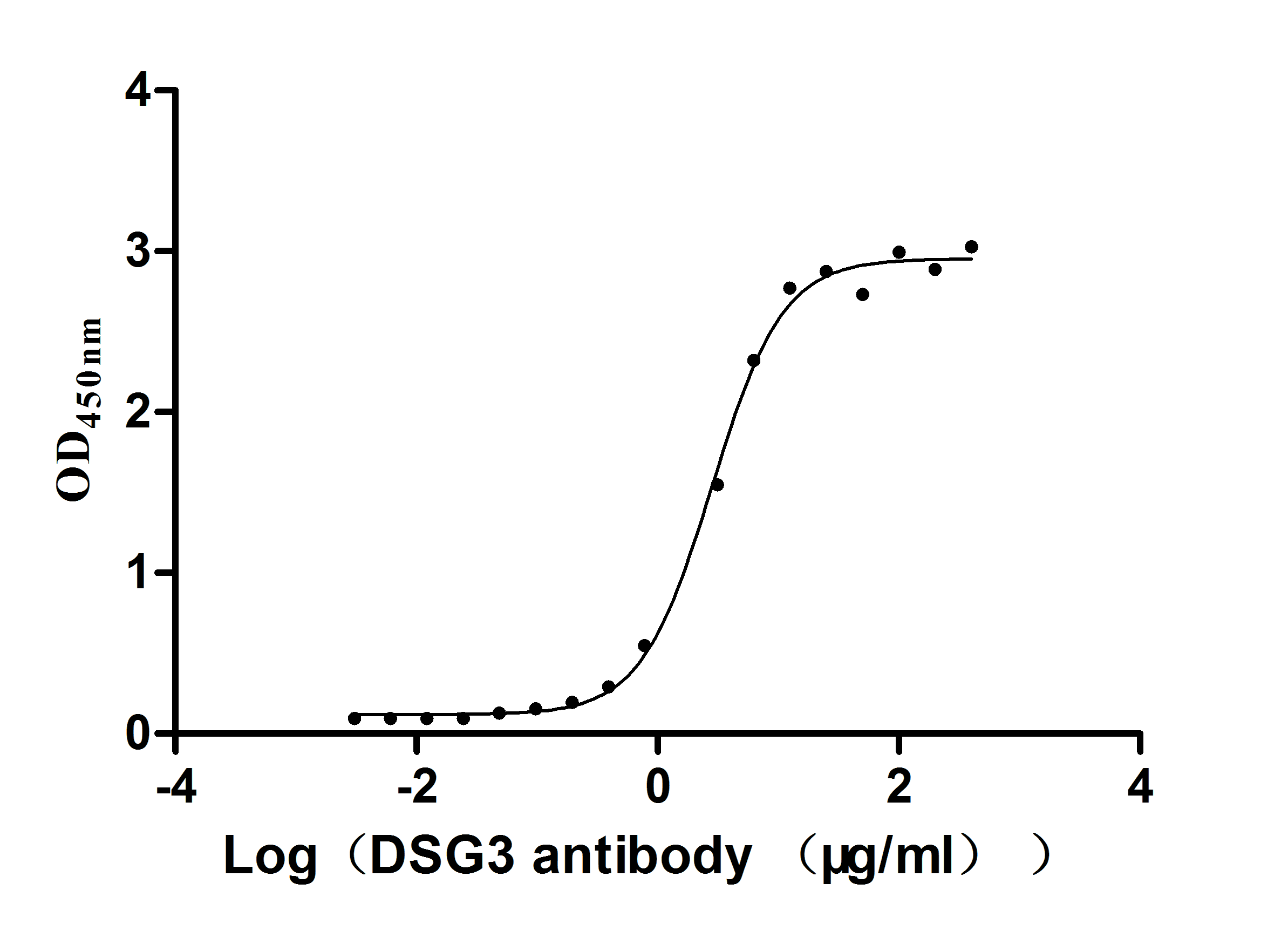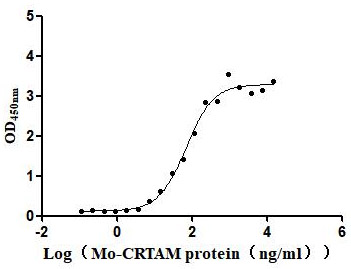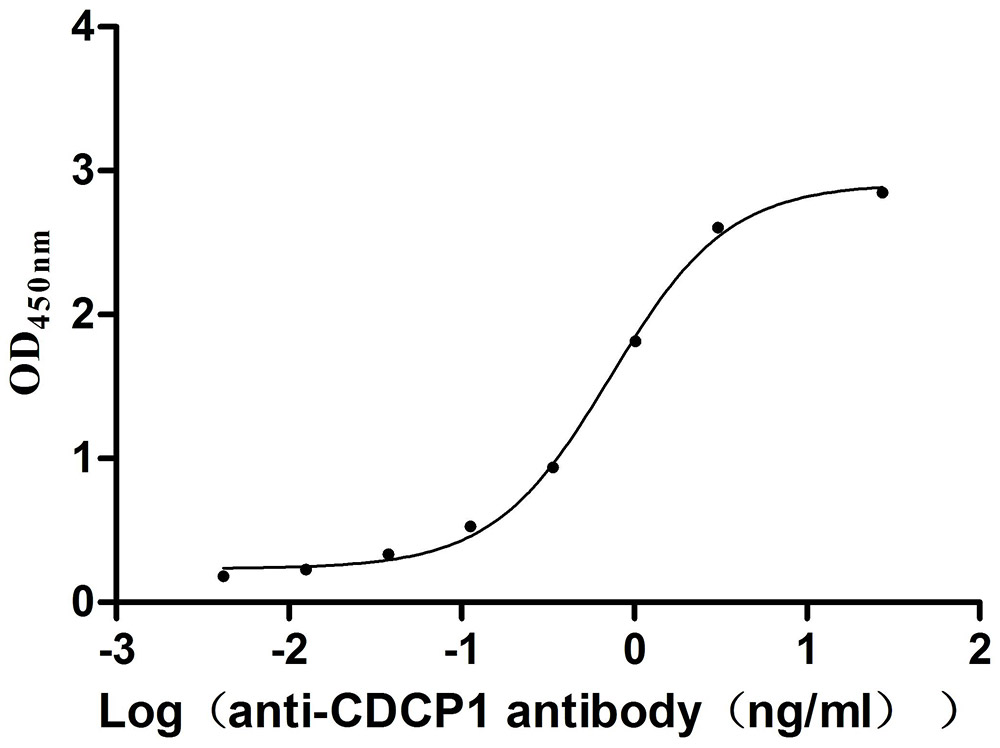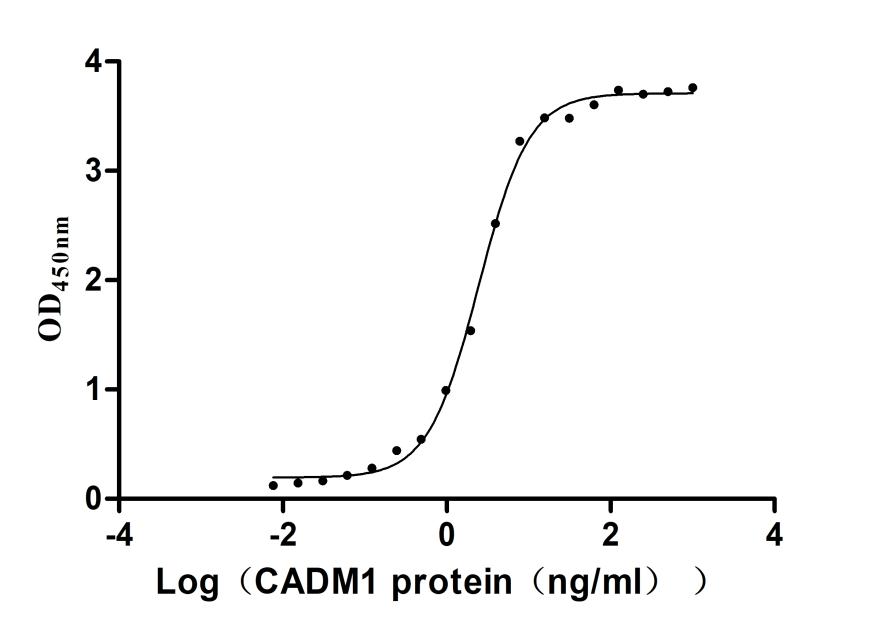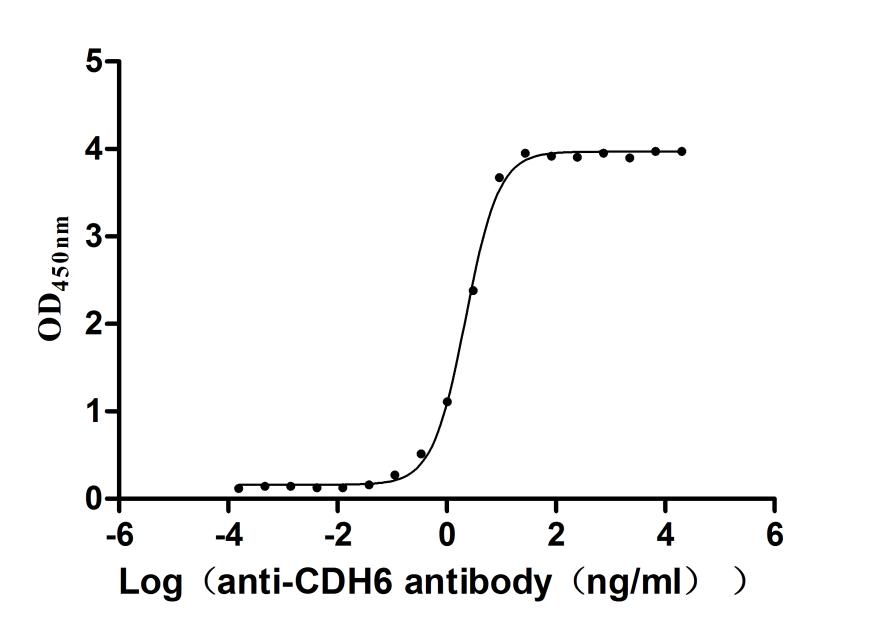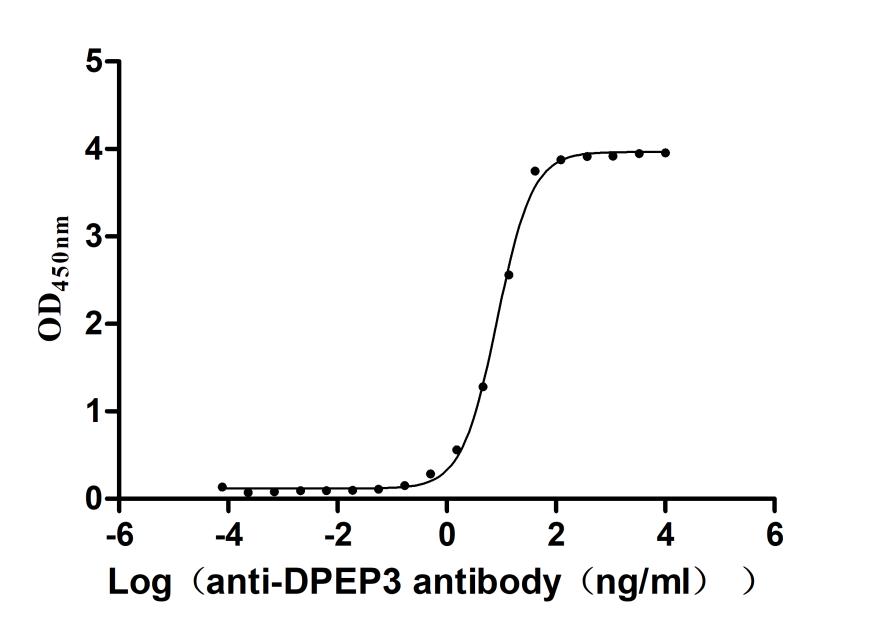Recombinant Arabidopsis thaliana SNF1-related protein kinase catalytic subunit alpha KIN10 (KIN10), partial
-
中文名稱(chēng):擬南芥KIN10重組蛋白
-
貨號(hào):CSB-YP656441DOA
-
規(guī)格:
-
來(lái)源:Yeast
-
其他:
-
中文名稱(chēng):擬南芥KIN10重組蛋白
-
貨號(hào):CSB-EP656441DOA
-
規(guī)格:
-
來(lái)源:E.coli
-
其他:
-
中文名稱(chēng):擬南芥KIN10重組蛋白
-
貨號(hào):CSB-EP656441DOA-B
-
規(guī)格:
-
來(lái)源:E.coli
-
共軛:Avi-tag Biotinylated
E. coli biotin ligase (BirA) is highly specific in covalently attaching biotin to the 15 amino acid AviTag peptide. This recombinant protein was biotinylated in vivo by AviTag-BirA technology, which method is BriA catalyzes amide linkage between the biotin and the specific lysine of the AviTag.
-
其他:
-
中文名稱(chēng):擬南芥KIN10重組蛋白
-
貨號(hào):CSB-BP656441DOA
-
規(guī)格:
-
來(lái)源:Baculovirus
-
其他:
-
中文名稱(chēng):擬南芥KIN10重組蛋白
-
貨號(hào):CSB-MP656441DOA
-
規(guī)格:
-
來(lái)源:Mammalian cell
-
其他:
產(chǎn)品詳情
-
純度:>85% (SDS-PAGE)
-
基因名:KIN10
-
Uniprot No.:
-
別名:KIN10; AK21; AKIN10; SKIN10; SNR2; SNRK1.1; At3g01090; T4P13.22SNF1-related protein kinase catalytic subunit alpha KIN10; AKIN10; EC 2.7.11.1; AKIN alpha-2; AKINalpha2; SNF1-related kinase 1.1; SnRK1.1
-
種屬:Arabidopsis thaliana (Mouse-ear cress)
-
蛋白長(zhǎng)度:Partial
-
蛋白標(biāo)簽:Tag?type?will?be?determined?during?the?manufacturing?process.
The tag type will be determined during production process. If you have specified tag type, please tell us and we will develop the specified tag preferentially. -
產(chǎn)品提供形式:Lyophilized powder
Note: We will preferentially ship the format that we have in stock, however, if you have any special requirement for the format, please remark your requirement when placing the order, we will prepare according to your demand. -
復(fù)溶:We recommend that this vial be briefly centrifuged prior to opening to bring the contents to the bottom. Please reconstitute protein in deionized sterile water to a concentration of 0.1-1.0 mg/mL.We recommend to add 5-50% of glycerol (final concentration) and aliquot for long-term storage at -20℃/-80℃. Our default final concentration of glycerol is 50%. Customers could use it as reference.
-
儲(chǔ)存條件:Store at -20°C/-80°C upon receipt, aliquoting is necessary for mutiple use. Avoid repeated freeze-thaw cycles.
-
保質(zhì)期:The shelf life is related to many factors, storage state, buffer ingredients, storage temperature and the stability of the protein itself.
Generally, the shelf life of liquid form is 6 months at -20°C/-80°C. The shelf life of lyophilized form is 12 months at -20°C/-80°C. -
貨期:Delivery time may differ from different purchasing way or location, please kindly consult your local distributors for specific delivery time.Note: All of our proteins are default shipped with normal blue ice packs, if you request to ship with dry ice, please communicate with us in advance and extra fees will be charged.
-
注意事項(xiàng):Repeated freezing and thawing is not recommended. Store working aliquots at 4°C for up to one week.
-
Datasheet :Please contact us to get it.
靶點(diǎn)詳情
-
功能:Catalytic subunit of the probable trimeric SNF1-related protein kinase (SnRK) complex, a central regulator of cellular energy homeostasis, which, in response to seemingly unrelated darkness, sugar and stress conditions, activates energy-producing pathways and inhibits energy-consuming processes. May play a role in a signal transduction cascade regulating gene expression and carbohydrate metabolism in higher plants. The SnRK complex may also be involved in the regulation of fatty acid synthesis by phosphorylation of acetyl-CoA carboxylase and in assimilation of nitrogen by phosphorylating nitrate reductase. In vitro, KIN10 exhibits kinase activity on sucrose phosphate synthase and the kinase activity is inhibited by PRL1. May be a subunit of a SCF ubiquitin ligase complex and thus be involved in proteasomal ubiquitination. Phosphorylates GRIK1/SNAK2 and GRIK2/SNAK1 in vitro. Cooperates with FUS3 to regulate developmental phase transitions and lateral organ development and act both as positive regulators of abscisic acid (ABA) signaling during germination. Phosphorylates FUS3 in embryo. Negatively modulates MYC2 accumulation through its protein phosphorylation. Phosphorylates geminivirus (CaLCuV, TGMV, ToMoV) AL2 protein resulting in a delay in the viral DNA accumulation and symptom appearance during infection. Regulates bZIP63 activity to alter metabolism in response to starvation through its protein phosphorylation. Under sugar deprivation conditions, antagonizes the IDD8 function in flowering time control by its protein phosphorylation. Plays a cardinal role in the control of cell proliferation through inhibition of KRP6 activity by its protein phosphorylation. Under submergence, phosphorylates PTP1, leading to the release of the MPK6 signaling pathway inhibition. Triggers its own SUMO-mediated proteasomal degradation, establishing a negative feedback loop that attenuates SnRK1 signaling and prevents detrimental hyperactivation of stress responses. Phosphorylates RAPTOR1B in vitro. Phosphorylates and down-regulates HMGR1S in vitro. Kinase activity is redox-sensitive. Acts upstream of TOR in the regulation of autophagy. Required for the activation of autophagy by many abiotic stresses. Involved in positive regulation of autophagy, possibly by affecting the phosphorylation of ATG1 proteins. Negatively modulates WRI1 accumulation through its protein phosphorylation. Modulates leaf senescence progression by the negative regulation of EIN3 accumulation through its protein phosphorylation. Under extended darkness, C/S1-bZIP-SnRK1 complex interacts with the histone acetylation machinery to remodel chromatin and facilitate transcription. BZIP2-BZIP63-KIN10 complex binds to the ETFQO promoter to up-regulate its transcription. Phosphorylates and down-regulates IPK2b in vitro. Involved in the regulation of sucrose-induced hypocotyl elongation under light/dark cycles.
-
基因功能參考文獻(xiàn):
- KIN10 expression modulates root phenotype of Arabidopsis thaliana root system in condition of energy stress. PMID: 30480412
- KIN10 is required for sucrose-induced hypocotyl elongation in light/dark cycles. PMID: 29114081
- AKIN10 conditionally works in a circadian clock input pathway to the circadian oscillator.AKIN10 modulates the Arabidopsis circadian clock in a light-dependent manner. PMID: 28054361
- the activity and T-loop phosphorylation of AKIN10, the kinase subunit of the SnRK1 complex, is regulated by the redox status. PMID: 28940407
- SnRK1 acts upstream of TOR in the activation of autophagy in Arabidopsis PMID: 28783755
- Data suggest that AKIN10 phosphorylates and inactivates HMGR; AKIN10 phosphorylates not only conserved Ser577 in active site but also other site/sites in noncatalytic domain of HMGR; inactivation of HMGR by AKIN10 requires interaction of AKIN10 with GRIK1. (AKIN10 = SnRK1 protein kinase; HMGR = hydroxymethylglutaryl-CoA-reductase; GRIK1 = geminivirus Rep-interacting kinase 1) PMID: 28263378
- SnRK1 shares clear structural and functional similarities with its orthologs, yeast SNF1 and mammalian AMPK, but has evolved unique features that presumably provide a better adaptation to an autotrophic lifestyle. (Review) PMID: 27812990
- Taken together, our results disclose the central low-energy activated SnRK1-C/S1-bZIP signalling module as gateway to integrate information on the plant's energy status into root meristem control, thereby balancing plant growth and cellular energy resources. PMID: 28158182
- observations indicate that AKIN10 antagonizes the IDD8 function in flowering time control, a notion that is consistent with the delayed flowering phenotypes of AKIN10-overexpressing plants and idd8-3 mutant PMID: 25929516
- AKIN10 negatively modulates AtMYC2 protein accumulation via proteasome activity upon AKIN10 kinase activity-dependent protein modification. Transgenic plants expressing AKIN10 indicates that AKIN10 activity undermined AtMYC2-dependent salt tolerance. PMID: 24890857
- Arabidopsis SnRK1.1 phosphorylation of AL2 delays Cabbage leaf curl virus infection. PMID: 24990996
- SnRK1 activities critically influence stress-inducible gene expression and the induction of stress tolerance. [SnRK1.1] PMID: 22232383
- T6P/SnRK1 signaling pathway responds to Suc induced by sink restriction that enables growth recovery following relief of limitations such as low temperature. [SnRK1] PMID: 23735508
- FUS3 and AKIN10 functionally overlap in abscissic acid signaling, but play different roles in sugar responses during germination. PMID: 22902692
- FUS3 is phosphorylated by AKIN10. AKIN10 overexpression delays FUS3 degradation. AKIN10 and FUS3 function interactively to promote seed maturation, dormancy and inhibit developmental phase transitions. PMID: 22026387
- Data show that PP2C74 interacts with AKIN10, the catalytic alpha subunit of the SnRK1 protein kinase complex, the beta subunits of which are known targets of myristoylation. PMID: 22449965
- These studies uncover surprisingly pivotal roles of KIN10/11 in linking stress, sugar and developmental signals to globally regulate plant metabolism, energy balance, growth and survival PMID: 17671505
- Upon sensing the energy deficit associated with stress, nutrient deprivation and darkness, SnRK1 triggers extensive transcriptional changes that contribute to restoring homeostasis, promoting cell survival, adaptation, growth and development. PMID: 18701338
- SnRK1 is negatively regulated by 5PTase13. PMID: 18931139
- Trehalose-6-phosphate inhibits SnRK1 to activate biosynthetic processes in growing tissues. PMID: 19193861
- This finding reveals novel roles for the different catalytic subunits AKIN10 and AKIN11 during phosphate starvation. PMID: 19211700
- SnRK1.1 is activated by phosphorylation in response to sugars, and over-expression confers a glucose- and ABA-hypersensitive phenotype. PMID: 19302419
- GRIKs are SnRK1 activating kinases. PMID: 19339507
顯示更多
收起更多
-
亞細(xì)胞定位:[Isoform 1]: Plastid, chloroplast. Cytoplasm. Nucleus. Golgi apparatus.; [Isoform 2]: Cytoplasm. Nucleus. Endoplasmic reticulum.
-
蛋白家族:Protein kinase superfamily, CAMK Ser/Thr protein kinase family, SNF1 subfamily
-
組織特異性:Isoform 2 is widely expressed, especially in newly developing tissues. Isoform 2 is expressed throughout the seedling, with highest expression in leaf primordia and vascular tissue, and the seedling root tip. Isoform 2 is later expressed in developing lat
-
數(shù)據(jù)庫(kù)鏈接:
Most popular with customers
-
Recombinant Human Hepatocyte growth factor receptor (MET), partial (Active)
Express system: Mammalian cell
Species: Homo sapiens (Human)
-
Recombinant Macaca fascicularis Delta-like protein 3 (DLL3), partial (Active)
Express system: Mammalian cell
Species: Macaca fascicularis (Crab-eating macaque) (Cynomolgus monkey)
-
Recombinant Mouse Desmoglein-3 (Dsg3), partial (Active)
Express system: Mammalian cell
Species: Mus musculus (Mouse)
-
Recombinant Mouse Cell adhesion molecule 1 (Cadm1), partial (Active)
Express system: Mammalian cell
Species: Mus musculus (Mouse)
-
Recombinant Mouse CUB domain-containing protein 1 (Cdcp1), partial (Active)
Express system: Mammalian cell
Species: Mus musculus (Mouse)
-
Recombinant Human Cytotoxic and regulatory T-cell molecule (CRTAM), partial (Active)
Express system: Mammalian cell
Species: Homo sapiens (Human)
-
Recombinant Macaca fascicularis Cadherin 6(CDH6),partial (Active)
Express system: Mammalian cell
Species: Macaca fascicularis (Crab-eating macaque) (Cynomolgus monkey)
-
Recombinant Macaca fascicularis Dipeptidase 3(DPEP3) (Active)
Express system: Mammalian cell
Species: Macaca fascicularis (Crab-eating macaque) (Cynomolgus monkey)


